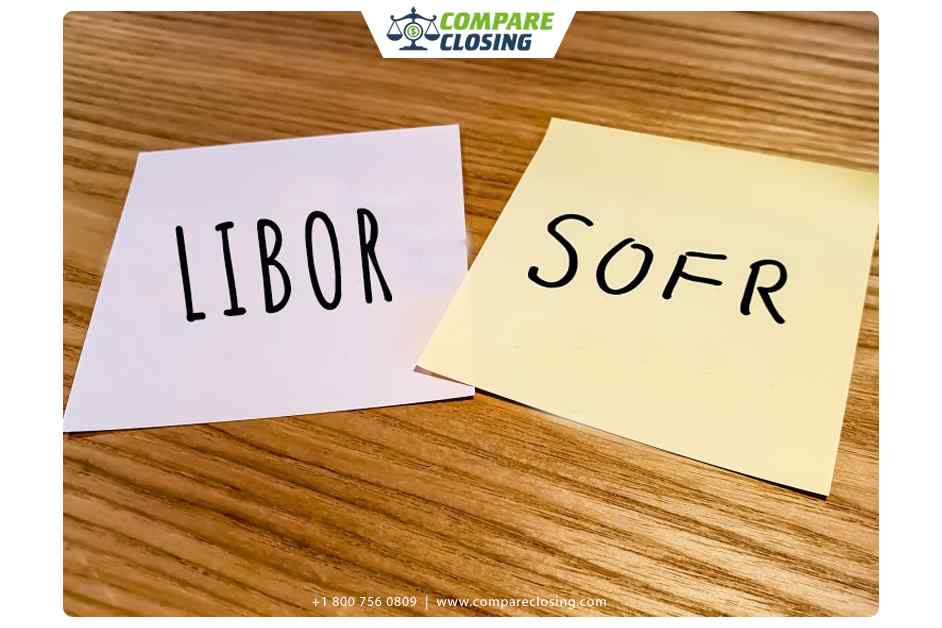Table of Contents
- What Are Netting Escrows & How Does It Work?: The Best Guide - January 2, 2024
- The Secret About Prescriptive Easement: Top Guide 1 Must Know - December 4, 2023
- About Home Equity Loans In Texas And How Can One Obtain It - November 27, 2023
About SOFR vs LIBOR Rates
The London Interbank Offered Rate (LIBOR) is a financial standard that has had a good run with a history of close to half a century mark. But the benchmark rate is being retired by the end of 2021 for some good reasons.
LIBOR has financial contracts worth $250 trillion that are tied to it, and the contracts denominated in US dollars will get passed to the Secured Overnight Financing Rate or SOFR.
Let us understand the main difference between LIBOR vs SOFR? How should organizations with LIBOR-referencing contracts adjust? Before we check the answers to these questions, let’s cast an eye on the characteristics of the two rates.
Why is LIBOR being retired?
The calculation of LIBOR happens from estimates of the rate that major London banks charge each other for loans.
Throughout the financial institution, the rate has been widely embraced and is being used to price derivatives, cash products, and other financial instruments.
In 2012, it came to light that banks were rigging the rate. The panel banks, which used to give LIBOR estimates were in alliance and in order to profit more from trades were submitting false data.
Moreover, the interbank loans, which were the transactions that LIBOR was supposed to be based on weren’t actually taking place.
Instead, panel banks estimated the rate they would fictionally lend to one another, because of this even if they are made in good faith the estimates added an element of uncertainty.
In 2017 the Financial Conduct Authority (FCA) after considering all of these factors, announced that it would phase out the benchmark by the end of 2021.
This announcement encouraged financial authorities across the world to get started on coining alternative benchmark rates to replace LIBOR.
The Alternative Reference Rates Committee (ARRC) formulated SOFR for dollar-denominated contracts.
Contrary to LIBOR, SOFR is based on actual transactions — that is, overnight transactions in the Treasury repo market.
Now, SOFR is a more precise means of measuring the cost of borrowing money. Because these transactions can be observed by anybody, so there is less chance for manipulation.
LIBOR vs SOFR
Though theoretically the transitioning in contracts from the use of LIBOR to SOFR sounds simple.
With SOFR there is sizeable trading in the Treasury repo market, if compared to LIBOR as of 2018 it is almost 1,500 times, theoretically making it a more accurate indicator of borrowing costs than the LIBOR.
LIBOR was based on estimated borrowing rates but the SOFR is based on data from observable transactions.
Since the two interest rates would have several important differences repricing the contracts would be complicated.
LIBOR represents an unsecured loan whereas the SOFR represents loans backed by Treasury bonds, which is a virtually risk-free rate.
LIBOR has 35 different rates, but SOFR currently publishes only one rate based exclusively on overnight loans.
Term rates
Going further to understand the difference between the term rates of SOFR vs LIBOR.
LIBOR’s estimates could be made for seven borrowing periods ranging from a day to 12 months this is the number one advantage of LIBOR, while SOFR only directly accounts for overnight transactions.
Since LIBOR offers these forward-looking term rates while SOFR only looks backward overnight, contracts will need to get adapted to that switch from a LIBOR term rate to SOFR.
By the end of 2021, the ARRC plans to build a strong enterprising and reformative SOFR term rate that is compliant with the International Organization of Securities Commissions (IOSCO).
Meanwhile, the Federal Reserve has released a note, estimating indicative forward-looking term rates and a method for their calculation and putting a disclaimer that these estimates are only for informational purposes.
Adjusting for a risk-free rate
SOFR rates are considered to be a risk-free rate because it is based off on overnight Treasury transactions, LIBOR rates, however, includes the credit risk of borrowing from a bank.
The majority of LIBOR-referencing contracts though do not have the need to include this credit risk, but they contain it.
That is the reason why contract parties when using SOFR to replace LIBOR will need to adjust to SOFR in order to avoid creating winners or losers during the transition.
How to adapt our contracts for the SOFR rate?
All new contracts instead of referencing LIBOR rates should simply reference the SOFR rate, for the many LIBOR-referencing contracts that mature past 2021.
In order to reduce their risk exposure organizations too need to make significant changes.
It will not be possible to renegotiate contracts to reference SOFR, in all cases.
Now when we know the contract can’t be renegotiated, it should be amended to include a strong fallback language that clearly states how and when the benchmark rate will transition to SOFR.
Obviously, this is going to be a challenging mission because all contracts cannot be treated similarly, so navigating from the LIBOR to SOFR transition is a massive project.
It would be ideal to use technology to extend your team when faced with highly complicated and scaled projects such as the LIBOR transition.
Conclusion
Further concluding the SOFR vs LIBOR difference, SOFR is much more volatile than LIBOR because of the day-to-day basis change, but when we take into account the compound average over a 30 to 90 days period then the volatility is smoothed out.
LIBOR is running out of time and it requires immediate action and a plan to ensure that the organization has a plan to transition before 31st December 2021 which is the phase-out date.
The whole of the financial industry will have a major repercussion with almost $400 trillion loans securities and derivates will be affected by this transition.
Amanda Byford
Amanda Byford has bought and sold many houses in the past fifteen years and is actively managing an income property portfolio consisting of multi-family properties. During the buying and selling of these properties, she has gone through several different mortgage loan transactions. This experience and knowledge have helped her develop an avenue to guide consumers to their best available option by comparing lenders through the Compare Closing business.







How will these changes effect people who currently have mortgages tied to LIBOR rates? Will we be forced to move to SOFR and what are the implications if we are?